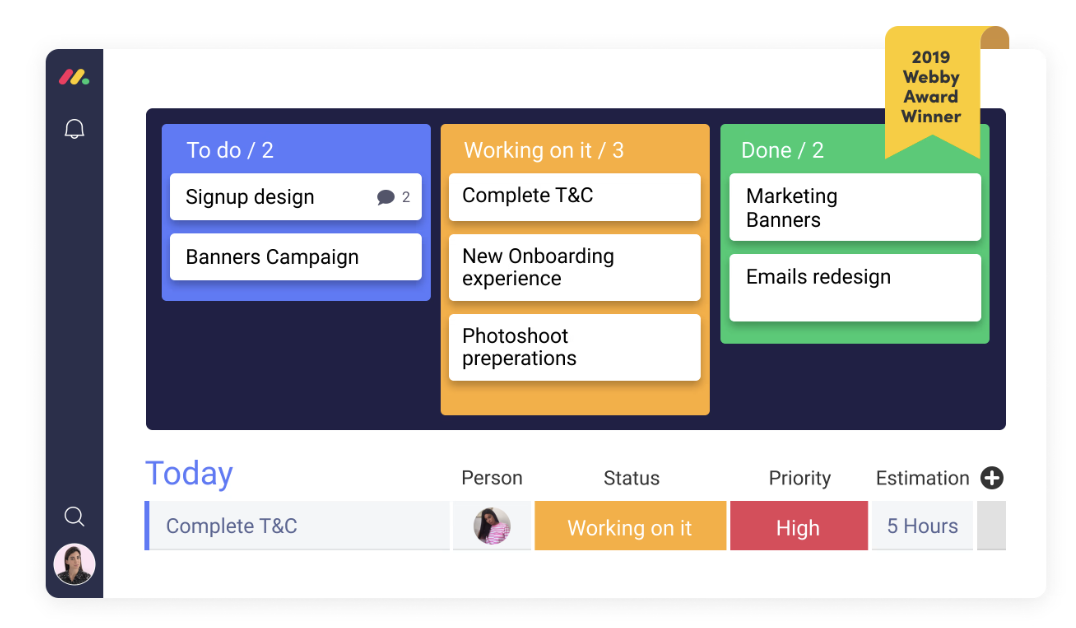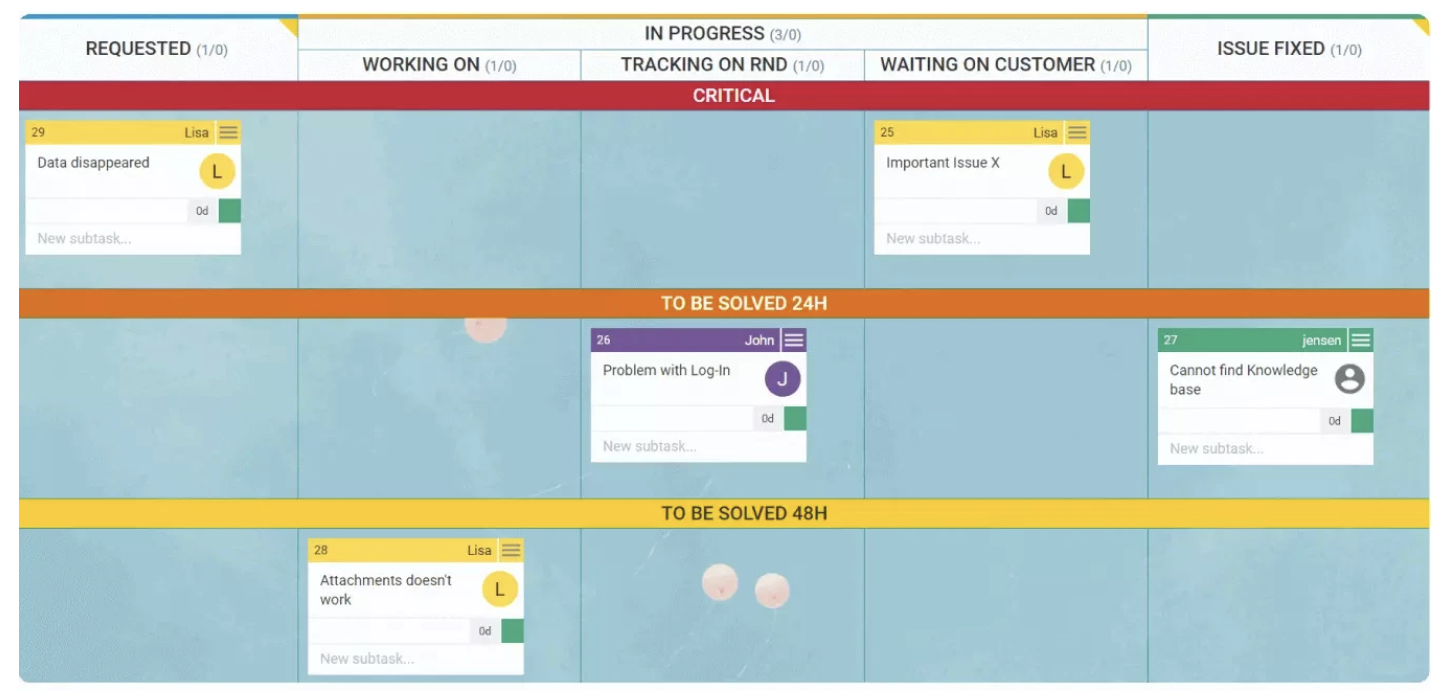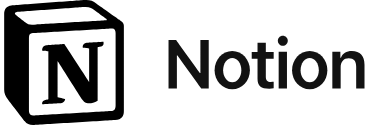A Kanban board is a visual project management tool that shows teams what needs to be done, what is ongoing, and what’s completed. Its key benefits include improved workflow visibility, enhanced team collaboration, and streamlined task prioritization.
When selecting a Kanban tool, prioritize features like customizability, drag-and-drop functionality, and integration capabilities. Our resource will help you discover what a Kanban board is and how it improves operations.
Kanban Board: How Does It Work?
To understand what a Kanban board is and how it works, imagine a visual checklist with cards and columns showing tasks and their status across different work stages. This checklist helps track progress through each step needed to complete a task. Using this system helps teams stay organized, manage multiple projects, and maintain focus on priorities. Ultimately, a Kanban board makes it easier to achieve business goals.
The Kanban board is central to the Kanban methodology, a project management framework that divides repeatable processes into distinct stages. It is designed to visualize workflows, limit work in progress, and identify bottlenecks and potential risks to ensure projects are on track. These boards are versatile and applicable across various industries, such as engineering, software development, marketing, and manufacturing.
A sample Kanban board structure may be divided into three primary sections: To Do, In Progress, and Done. This layout provides a clear perspective on task flow, with tasks moving through the stages as they progress.
Elements of a Kanban Board
The Kanban board is compatible with multiple methods, such as waterfall, scrum, and agile project management. David J. Anderson, a pioneer in the Kanban field, outlines five main components: visual signals, columns, work-in-progress limits, a commitment point, and a delivery point. We also incorporated swimlanes for categorizing work, which enhances a Kanban board’s functionality and clarity.
A distinct feature of a Kanban board is the visual card (e.g., tickets and stickies), which represents all project work items. Each card represents a task and contains critical details like the task description, assignee, and deadline. Once the cards are placed in the appropriate column, team members and stakeholders can quickly see the project’s status.
Kanban boards are organized into vertical columns, each representing a different stage in the workflow. Teams determine the number of columns based on their project needs and add cards under each column to reflect a task’s status. The simplest layout and example of Kanban board columns have three basic labels: “To do,” “Work in Progress,” and “Finished.”
WIP refers to the maximum number of cards allowed in a single column at any time. For instance, if a column has a WIP limit of five, no more than five tasks can be in that stage simultaneously. When a column reaches its WIP limit, the team must prioritize moving those tasks forward before adding new ones to that stage. This constraint helps identify bottlenecks and prevents overloading any part of the workflow.
Kanban boards only reflect the work the team is committed to completing, so the commitment point is when the team decides to start working on a task. For example, an “In progress” card marks the transition from planning to active work.
This stage is when a task or project is considered complete and often the point when the project or deliverable is handed over to the client or customer. The Kanban methodology aims to move tasks across the board efficiently, reaching the delivery point as swiftly as possible. The time from the commitment to the delivery point is known as lead time.
Swimlanes are horizontal lanes that categorize tasks by team, project, client, or priority criteria. Use swimlanes to keep related tasks together and differentiate tasks by priority levels (low, moderate, and high) or product (A and B). Organized swimlanes make it easier to prioritize tasks and ensure nothing is overlooked.
How to Set Up a Kanban Board
Now that we’ve answered the question of what a Kanban board is, you’re ready to follow our four-step process on how to use a Kanban board and set up a simple visual workflow for your team. Remember that the best way to design a board that suits your needs is to use it and adjust as you become more familiar with the process.
- Identify your workflow: The first step to creating a Kanban board is understanding how you work, from initiation to completion. Break down this process into distinct stages, becoming your board columns. Next, assign a unique color to different project types, such as preparing customer orders or handling customer returns, so you can easily distinguish between projects.
- Review and organize your tasks: Once you have the basic structure and workflow, it’s time to add details to your cards representing your work items. Be mindful of the card layout—it should be intuitive and contain essential information, such as a summary, status, theme or product type, deadline, and task owner. Review your backlog to prioritize and push pending tasks forward.
- Establish your protocols and policies: Set clear policies and processes to guide the team’s workflow. At this stage, define task management rules, including who has the authority to move tasks across columns and the WIP limits for each stage. For example, you may restrict task movement from “In Progress” to “Done” to team leads or set a WIP limit of five tasks in the “In Progress” column.
- Encourage feedback: Kanban boards work best when customized to fit a team’s needs. As workflows and team dynamics change, be receptive to suggestions and adjust the board accordingly. Regular updates and tweaks are essential to keep the board relevant, increase engagement, and ensure it continues to support the organization effectively.
monday.com is a leading project management software for small businesses offering a Kanban view for prioritizing tasks and balancing project requirements. Its Kanban view lets you customize a board where you can easily add new cards and create tailored columns. Its boards are colorful and can support images. monday.com uses a drag-and-drop interface, making moving tasks very simple.
Top Kanban Board Tools & Providers
Kanban boards can be physical, like whiteboards, or digital, integrated into work management platforms. Physical boards are easy to set up and can centralize office tasks, but they aren’t suitable for remote work and require manual updates. Digital boards, however, are ideal for hybrid environments due to their accessibility and automation features.
Here are five solutions for digital Kanban boards and their top project management software features. Most providers have Kanban board examples and templates to help you set up and organize a board that suits your needs.
Using the right Kanban software with tailored columns and automation enhances workflow management and productivity for small businesses. These tools are helpful for efficient project execution because they streamline task tracking and improve team collaboration. Our guide to the best Kanban software details pricing, use cases, and a comprehensive summary of each provider.
Kanban Board Benefits & Examples for Small Businesses
Kanban boards offer a clear, visual representation of tasks and their progress, streamlining task management and centralizing information. Managers overseeing multiple teams and projects can quickly spot problems, risks, and bottlenecks, while executives can gain a better overview of workloads and statuses. Here are the advantages of the Kanban board, along with some examples and their practical application.
- Better visibility: Kanban boards help teams easily understand project status and identify bottlenecks. For example, a marketing team planning a major campaign can see which tasks are on track and which need immediate attention.
- Organized tasking: Categorizing tasks into columns and setting WIP limits enables you to prioritize assignments and reduce delays. For instance, in a marketing team, a Kanban board helps balance activities like content creation and social media management, ensuring they are scheduled to avoid resource conflicts and overlap.
- Increased teamwork: Kanban boards enhance communication and collaboration while fostering accountability by making assignments and progress visible to the team. In a marketing team’s Kanban board, everyone can see who is responsible for each campaign task, reducing the risk of misunderstandings.
- Streamlined workflow: Kanban boards divide projects into manageable tasks and stages, providing teams with a consistent and reliable process. With clearly defined roles and tasks, team members can concentrate on one priority at a time. For a marketing team, this system facilitates a smooth transition from concept to execution, helping meet campaign deadlines.
While the examples above show how Kanban boards benefit marketing teams, their advantages apply across various industries. For example, in manufacturing, Kanban boards can effectively manage inventory and production schedules.
In software development, they help track coding tasks and bug fixes. By adopting Kanban boards, organizations can streamline workflow and ensure projects and operations are completed efficiently and on time.
Frequently Asked Questions (FAQs)
Kanban boards are highly flexible and adaptive for all project types, whether simple or complex. Regardless of your industry, you can customize columns to reflect your project phases like “Ideas,” “Development,” or “Completed,” and create individual cards for each client request or task. Users can add or remove columns, adjust task details, and scale the board according to the size and scope of their project.
Yes, most leading Kanban tools integrate with popular business software like monday.com, Slack, QuickBooks, and Google Workspace, allowing you to sync updates and update project statuses. Review the list of integrated apps to ensure your tools can all be integrated. Connecting your project management tool with other business software provides better insight into your overall project progress for better decision-making.
No, Kanban boards are generally simple to set up and easy to use. Depending on your Kanban tool, most teams and users can quickly adapt and customize it with minimal training. However, an initial onboarding or training session is recommended for mass deployment or first-time users to introduce the tool and essential operations and ensure effective use.
Bottom Line
In summary, a Kanban board is a powerful tool for small businesses wanting to optimize task management and improve team productivity. With a visual representation and logical task organization, you can track project progress easily. Now that you know what a Kanban board is, embrace its simplicity and effectiveness to drive your business forward. Begin using a Kanban board today and see the difference it can make.








